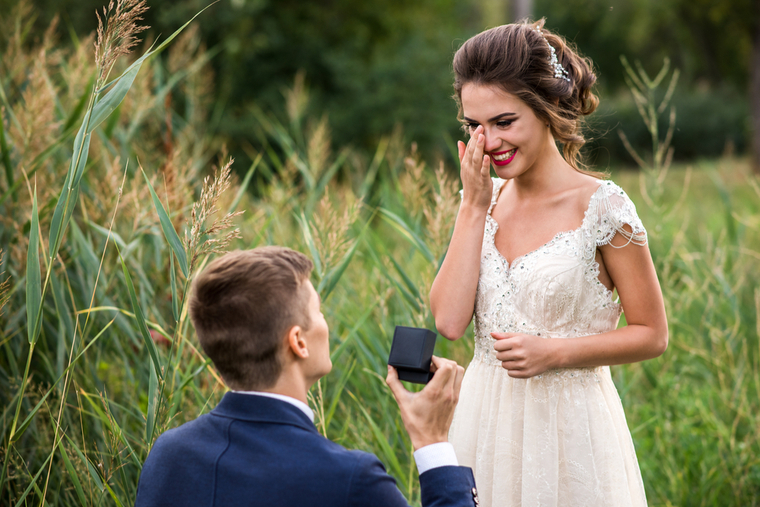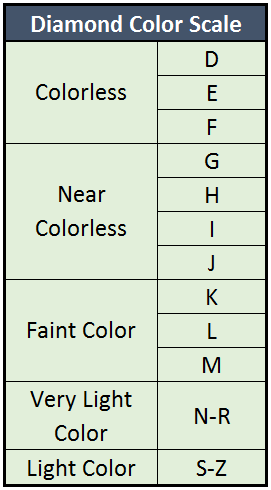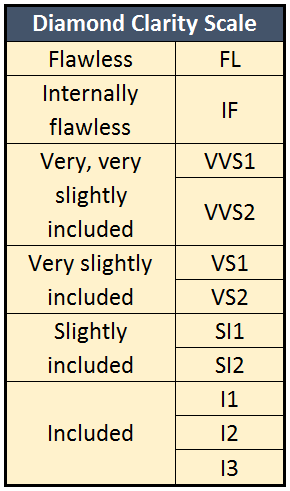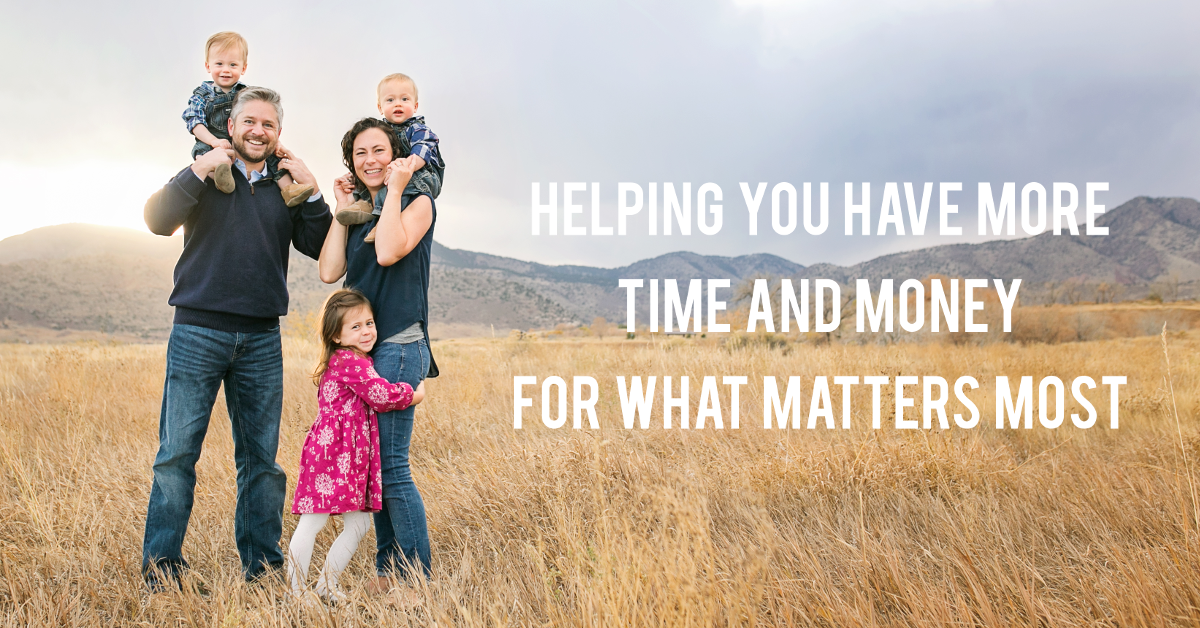If you happen to be on the verge of buying a diamond engagement ring, this post is for you. Most of you probably aren’t in that situation, however. In that case, this post is for the friend or brother or son of yours who is getting close to popping the question.

For most people, purchasing an engagement ring presents a challenge. On the one hand, you want to get something really nice—something that your girlfriend will be happy to wear even many years from now. On the other hand, your budget is limited, especially when you’re just starting out.
Fortunately, there is a way to get a fantastic ring for much less than most people pay. I used this approach to buy my wife’s engagement ring more than 10 years ago. And I’m not ashamed to admit it. Why? Because it isn’t about being cheap. It’s about getting the absolute best ring you can for your budget. Here’s how to do it:
Step 1: Focus, First, Just on the Diamond
The costliest part of a diamond ring is, of course, the diamond itself. The stone can account for up to 90% of the cost of the ring.
For that reason, the main thing you want to focus on is getting the best diamond you can for the money.
You can buy loose diamonds from a number of reputable online retailers including BlueNile, Ritani, and James Allen.
Once you’re set on looking, first, just for a loose diamond, here’s how to get the best one for the money:
Step 2: Understand and Optimize the 4Cs of Diamonds
You should only buy a diamond that has a certificate issued by an independent gemological laboratory such the Gemological Institute of America (GIA) or the American Gem Society (AGS).
The certificates issued by GIA and AGS assess diamonds according to these “4Cs”: color, clarity, cut, and carat weight.
The higher rating each factor receives, the more expensive the diamond. That makes sense.
But you would also think that diamonds are more and more beautiful the higher each factor is rated. That is true . . . under a microscope. But it isn’t true to the naked eye. At a certain point, for some of the factors, the naked eye can no longer perceive additional increases in quality.
The trick to getting the best loose diamond for the money is to plough your dollars only into the aspects of the diamond that can be appreciated by the naked eye.
Lets walk through each of the 4Cs to show what I mean:
-
Color
 Diamonds are measured in terms of their absence of color. A scale from “D” to “Z” is used. “D” is colorless. “Z” is very noticeably yellow. The closer to “D” a diamond’s color is rated, the more expensive the diamond, all other factors being equal.
Diamonds are measured in terms of their absence of color. A scale from “D” to “Z” is used. “D” is colorless. “Z” is very noticeably yellow. The closer to “D” a diamond’s color is rated, the more expensive the diamond, all other factors being equal.But here’s the thing. The naked eye cannot detect color past a certain point. That reality presents an opportunity for anyone purchasing a diamond on a budget.
Specifically, any diamond rated “J” or higher (J, I, H, G, F, E, or D) is likely to appear colorless to the naked eye. Some sites draw the line at “I” or higher, especially for larger stones. (See, for instance, here, here, here, and here.)
I recommend aiming for a stone that is “I” in color, especially for larger stones.
All other factors being equal, if you were to buy a stone that is D-H in color, instead of I in color, here is how much more you might pay:D = $2,075 more
E = $1,825 more
F = $1,650 more
G = $1,225 more
H = $750 more
I = my recommendationWhy pay $750 – $2,075 more for a difference that is undetectable to the naked eye? Better to apply that money to other aspects of the ring.
-
Clarity
 Most diamonds have some blemishes called “inclusions.” Diamonds are assigned a certain “clarity” rating based on the number, size, position, etc. of their inclusions. The closer to “FL” (Flawless) a diamond’s clarity is rated, the more expensive the diamond, all other factors being equal.
Most diamonds have some blemishes called “inclusions.” Diamonds are assigned a certain “clarity” rating based on the number, size, position, etc. of their inclusions. The closer to “FL” (Flawless) a diamond’s clarity is rated, the more expensive the diamond, all other factors being equal.But, the naked eye cannot detect clarity beyond a certain point. Once again, that presents an opportunity for anyone purchasing a diamond on a budget.
Specifically, any diamond rated “SI1” or higher (SI1, VS2, VS1, VVS2, VVS1, IF, or FL) is likely to appear clear to the naked eye. Some sites draw the line at “VS2” or higher, especially for larger stones. (See, for instance, here, here, here, or here.)
I recommend aiming for a stone that is “VS2” in clarity, especially for larger stones.
All other factors being equal, if you were to buy a stone whose clarity rating is higher than VS2, you could pay $800 – 1,500+ more.Once again, why pay $800 – $1,500+ more for a difference that is undetectable to the naked eye? Better to apply that money to other aspects of the engagement ring.
-
Cut
The cut of a diamond does not refer to its shape. Shapes include round, princess, emerald, etc. (I recommend asking your girlfriend what shape stone she would like or else trying to find out through a friend of hers, etc.) The “cut” refers to how the diamond interacts with light as a result of how shallow or deep the stone was cut.
It can be difficult to “hack” the cut in the same way that you can “hack” the color and clarity. For one thing, only round-shaped diamonds even receive an official certification rating their cut.
That said, cut is very important as it has the biggest impact on the sparkle of the diamond.
For any diamond that has a “cut” rating, you don’t necessarily need an “ideal” rating, but I’d recommend getting at least a “good” rating. The larger the stone, the more you’d want to aim for at least a “very good” rating.
-
Carat weight
Carat weight is, simply, how much the diamond weighs. It correlates very closely with the size of the diamond. And the size of the diamond is, of course, very visible to the naked eye. I know this is going to come as a shock, but, generally speaking, most people prefer a larger diamond to a smaller one. . . .
If you used my above recommendations for choosing the diamond’s color and clarity, you have narrowed your search down to diamonds that appear, to the naked eye, to be color-free and clear of blemishes. And in the process, you’ve saved about $1,500 – $3,000+ over what others might have paid for factors not discernible to the naked eye.
Now’s the time to take most or all of that savings and spend it on getting a larger stone.
Consider this example. At the time of this writing, for almost exactly $3,800, you could get any of the following stones:

The stone I recommend should appear as colorless to the naked eye as the “super-colorless” stone, and it should appear as clear to the naked eye as the “super-clear” stone. The difference is that the stone I recommend is 12-35% larger and breaks the coveted 1-carat mark.
Step 3: Buy the Ring’s Setting
With the money you saved by not overpaying for the diamond’s color or clarity, you can spend some on getting a larger stone as I recommended above. But you can also divert some of that money to the ring’s setting. There are two reasons you might want to do so.
First, you might simply want to purchase a more expensive setting that you / your girlfriend find more beautiful.
But there’s another consideration as well. Some people would find the whole above process of buying a loose diamond a little unromantic. Something about sitting behind a computer screen “optimizing your loose diamond purchase” just doesn’t scream warmth.
So, what you can do is purchase the ring’s setting from a local store that has sentimental value to your girlfriend. You’ll spend more on the setting at a local store than you would for a similar setting online, but that’s okay because the setting is a small portion of the overall cost of the engagement ring. By optimizing the purchase of the diamond—which may comprise 90% of the cost of the ring—you can afford not to optimize the purchase of the setting, which may only comprise 10% of the ring.
Want an Incredible Honeymoon?
Conclusion
What I think most people desire in an engagement ring is:
- Sentimental value
- A beautiful setting
- A big diamond that appears to be colorless and clear
It’s tough to achieve all of those criteria on a budget. Tough, but not impossible.
By aiming for a diamond that is rated “I” in color and “VS2” in clarity, you have the best shot possible of purchasing the desired engagement ring on your budget.
(And, of course, what I think people really want, at the end of the day, is not so much the ring as the love the ring represents. So, if you’re reading this post and didn’t optimize the ring that you purchased for your wife . . . as long as you love her, you’ll be just fine. 😊 )
Question: For folks on a budget, what other advice would you give them to help them get a great engagement ring at a reasonable price? You can leave a comment by clicking here.
If you liked this post, why not join the 5,000+ subscribers who receive blog updates on how to have more time and money for what matters most? Sign up here.

Thanks for your tips on how to Buy the Best Diamond Engagement Ring for Your Budget. It’s helped me in the future for purchasing.
You’re very welcome, Ragini; glad it helped.
It’s good to know that you can save money for a larger stone on an engagement ring by not overpaying for the diamond’s color or clarity. I think in today’s day and age, a lot of people have the mindset that the larger the diamond is, the better the ring is. If I can save money and still by a large diamond ring, then that’s a win for me. I’ll be sure to keep this in mind when I’m shopping for an engagement ring.
My son is going to be getting married soon, so he wants to make sure that he gets the right engagement ring. It makes sense that he would want to find one with nice diamonds! I’ll see if I can help him find a diamond ring that is still in his budget.
I’m glad you mentioned that when buying an engagement ring, it is best to focus on buying a ring with the best diamond for the amount you are spending. I’m thinking of proposing to my girlfriend soon, but I don’t want to break the bank on an engagement ring. These tips you shared will help as I continue to look for the right ring.
Thanks, Dennis; my pleasure. I wish you the very best on your proposal and beyond!